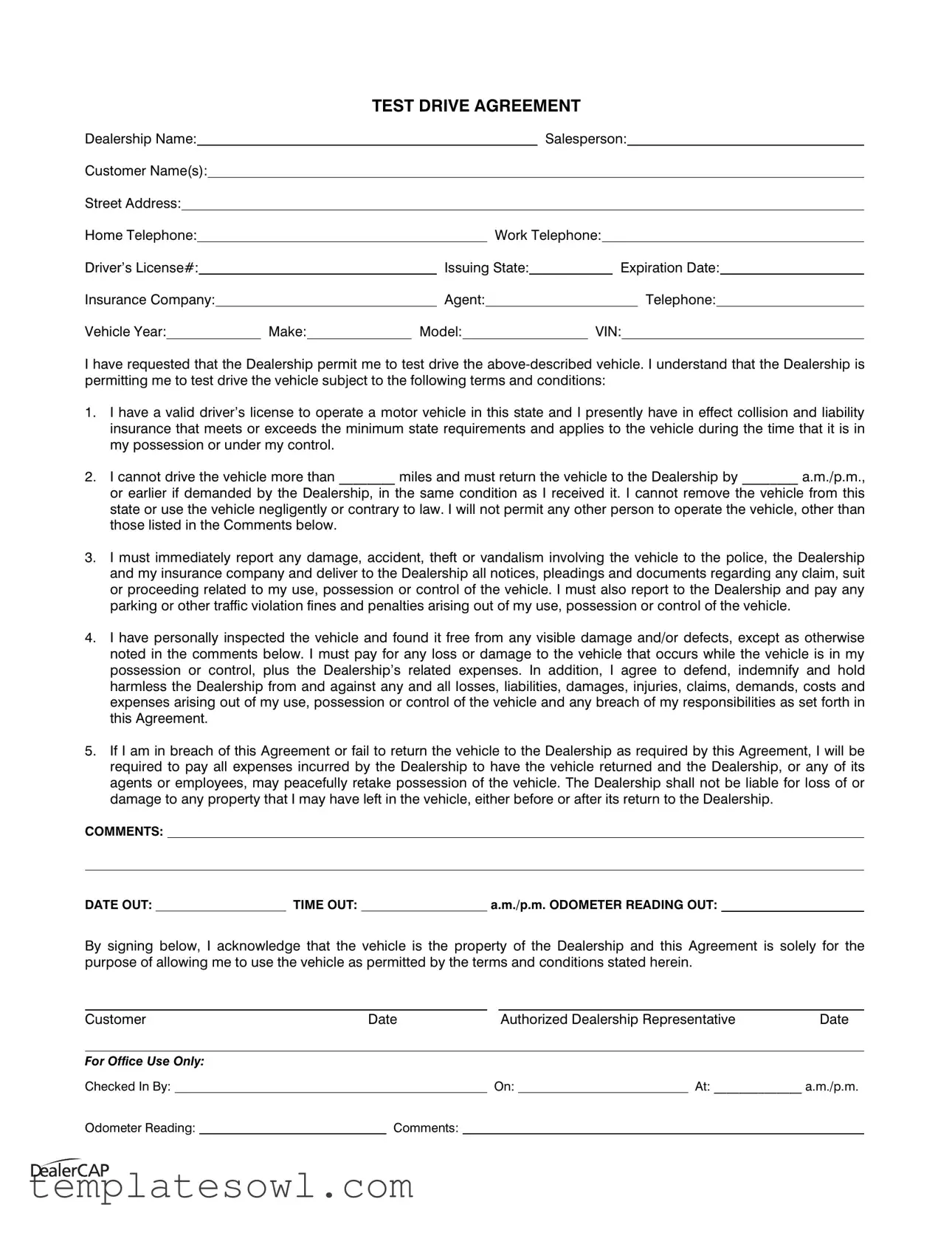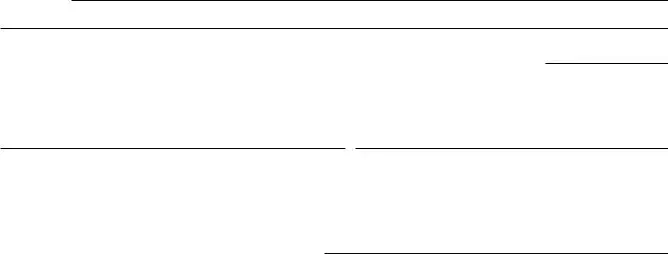TEST DRIVE AGREEMENT
|
|
|
|
|
|
|
|
|
|
|
|
|
|
|
|
|
|
|
|
|
|
|
|
|
Dealership Name: |
|
|
|
|
|
|
|
|
|
|
Salesperson: |
|
Customer Name(s): |
|
|
|
|
|
|
|
|
|
|
|
|
|
|
|
|
|
|
|
Street Address: |
|
|
|
|
|
|
|
|
|
|
|
|
|
|
|
|
|
|
|
Home Telephone: |
|
|
|
|
|
|
|
|
Work Telephone: |
|
Driver’s License#: |
|
|
|
|
|
Issuing State: |
|
|
|
|
Expiration Date: |
|
Insurance Company: |
|
|
|
|
Agent: |
|
|
|
|
|
|
|
Telephone: |
|
Vehicle Year: |
|
|
Make: |
|
Model: |
|
|
VIN: |
|
I have requested that the Dealership permit me to test drive the above-described vehicle. I understand that the Dealership is permitting me to test drive the vehicle subject to the following terms and conditions:
1.I have a valid driver’s license to operate a motor vehicle in this state and I presently have in effect collision and liability insurance that meets or exceeds the minimum state requirements and applies to the vehicle during the time that it is in my possession or under my control.
2.I cannot drive the vehicle more than ________ miles and must return the vehicle to the Dealership by ________ a.m./p.m., or earlier if demanded by the Dealership, in the same condition as I received it. I cannot remove the vehicle from this state or use the vehicle negligently or contrary to law. I will not permit any other person to operate the vehicle, other than those listed in the Comments below.
3.I must immediately report any damage, accident, theft or vandalism involving the vehicle to the police, the Dealership and my insurance company and deliver to the Dealership all notices, pleadings and documents regarding any claim, suit or proceeding related to my use, possession or control of the vehicle. I must also report to the Dealership and pay any parking or other traffic violation fines and penalties arising out of my use, possession or control of the vehicle.
4.I have personally inspected the vehicle and found it free from any visible damage and/or defects, except as otherwise noted in the comments below. I must pay for any loss or damage to the vehicle that occurs while the vehicle is in my possession or control, plus the Dealership’s related expenses. In addition, I agree to defend, indemnify and hold harmless the Dealership from and against any and all losses, liabilities, damages, injuries, claims, demands, costs and expenses arising out of my use, possession or control of the vehicle and any breach of my responsibilities as set forth in this Agreement.
5.If I am in breach of this Agreement or fail to return the vehicle to the Dealership as required by this Agreement, I will be required to pay all expenses incurred by the Dealership to have the vehicle returned and the Dealership, or any of its agents or employees, may peacefully retake possession of the vehicle. The Dealership shall not be liable for loss of or damage to any property that I may have left in the vehicle, either before or after its return to the Dealership.
COMMENTS:
DATE OUT: |
|
TIME OUT: |
|
a.m./p.m. ODOMETER READING OUT: |
By signing below, I acknowledge that the vehicle is the property of the Dealership and this Agreement is solely for the purpose of allowing me to use the vehicle as permitted by the terms and conditions stated herein.
Customer |
Date |
Authorized Dealership Representative |
Date |
|
|
|
|
|
|
|
For Office Use Only: |
|
|
|
|
|
Checked In By: |
|
|
On: |
|
At: ______________ a.m./p.m. |

